Join More Than 50,000+ Subscribers and get latest camera news and rumors
NEW CAMERA VIDEOS ON YOUTUBE
Download Our Android App
|
By admin, on May 28th, 2024

Nikon Z6 III released as scheduled – The following set of information coming out from the trusted source E8M_8888.
Many dealers have said that they are sure not to release it in May.
period =its month =July 2024
Update: Shipping from July
That’s all the update we have related to the Nikon Z6 Mark III
— ENd of rumor —
Nikon Z6 III Got Wireless Certification in January month and as usual Camera makers take roughly 3 Months of time of release their registered product, but Nikon Z6 III has now registered for more than three months, Let’s hope to see the camera on or before July 2024.
Update: Nikon Z6 III shipping will start from July 2024
By admin, on May 27th, 2024
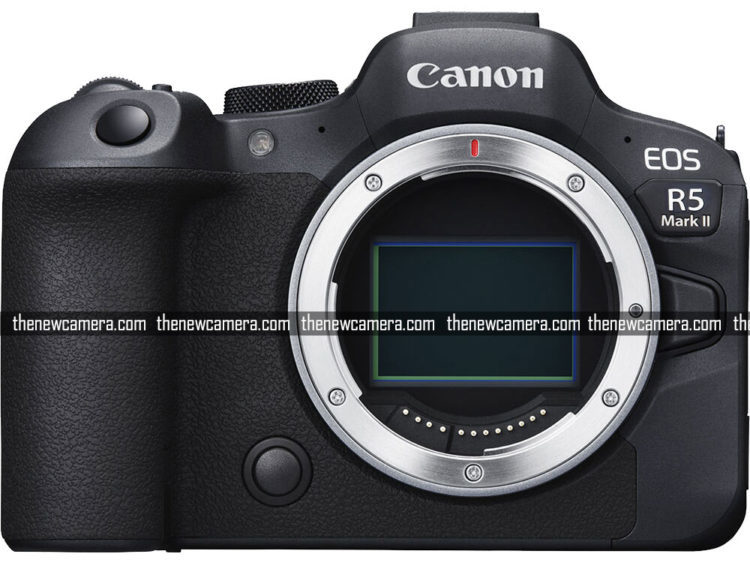 Look at the updated information we have related to the upcoming Canon R5 Mark II camera. Look at the updated information we have related to the upcoming Canon R5 Mark II camera.
Canon R5 Mark II Price $3999
EOS R5 Mark II will be announced in July, with shipments starting in August. The EOS R5 Mark II will be priced at $3999, almost the same as the original EOS R5’s launch price of $3899 (the current R5 is priced at $2899).
Canon R5 Mark II Rumored Specification
- Sensor: 45-megapixel stacked CMOS sensor
- Sensor Readout Speed: Faster than the Canon R3’s 24-megapixel stacked BSI CMOS sensor
- Readout is 30% faster than the Canon R3 Sensor
- RAW Pre-Burst + Customizable Feature: Allows recording RAW files for one, two, or three seconds before pressing the shutter
- Maximum Shooting Speed: 30 frames per second in a still mode without a rolling shutter effect
- Users Can select the electronic variable shutter range, no such option is available in the Canon R5 Camera now
- Shutter Options: Electronic and mechanical shutters are available; the mechanical shutter protects the sensor during lens changes in wild or dusty environments
- Video Recording:
- Uninterrupted 8K recording without overheating, thanks to an advanced heat sink mechanism
- The New Canon R5 Mark II camera has small vents below
- 4K video recording at 60 FPS and 120 FPS without overheating
- Design: Similar overall look to the Canon R5 with some design changes inspired by the R6 Mark II camera
- Dual Card Slots: UHS-II and CF Express Type B
These are the updates we have related to the upcoming Canon R5 Mark II camera
Get LIVE RUMORS –> FACEBOOK | TWITTER | INSTAGRAM to get live news + Canon rumors 24X7
source ordinaryfilmaker youtube channel
By admin, on May 27th, 2024
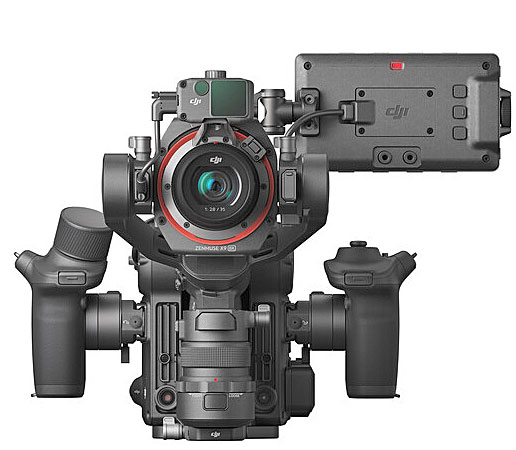
DJI Pro creator kit, after the Pocket creator kit we may see a new DJI Professional creator kit with an interchangeable lens camera body where an advanced hand-held stabilizer mechanism featuring an L-mount.
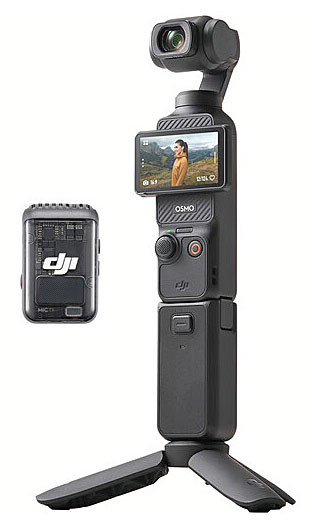
According to the latest information surfaced on the web, the prototype exists in the lab, but still, there is time and more testing has to be done before it reaches the final production line.
If it is true, then for sure, camera makers will be in big trouble, and most of the content creators will buy the DJI Pro creative combo instead of getting an interchangeable lens camera for creating blogs.
Follow us on our social pages FACEBOOK | TWITTER | INSTAGRAM, If you have time –>see more Camera News
By admin, on May 25th, 2024
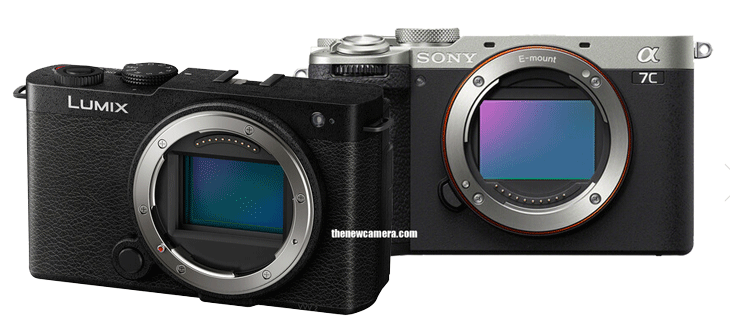
Let’s compare the Panasonic S9 versus the Sony A7C II. Starting with the comparison,
1. Sensor
we know the key difference here is the sensor resolution. Both cameras feature BSI CMOS sensors, but the Sony A7C II has a 33-megapixel Exmor R BSI CMOS sensor, whereas the Panasonic S9 uses a 24.2-megapixel sensor BSI CMOS. If we compare them side by side, the Sony A7C II will show slightly more details due to the higher-resolution sensor, specifically when you are pixel-peeping at 100% scale, as many of us do as photographers. However, the difference is minimal and not noticeable until you test both images under lab conditions.
2. AutoFocus
The autofocus sensitivity of both cameras is slightly different. The Sony A7C II’s autofocus sensitivity range is -3 EV to 20 EV, whereas the autofocus sensitivity range of the Panasonic S9 is from 0 to 18 EV., so Sony A7C II II practically more usable in low-light condition compared to the S9
3. AI integration
Regarding AI integration, the Sony A7C II camera is more advanced, with a dedicated AI chip inside it as well as dedicated AI alkgo. The autofocus capability and tracking performance of the A7C II is better compared to S9, and it can track subjects like trains, airplanes, and other moving objects. This doesn’t mean the Panasonic S9’s autofocus system is inferior or bad; it is quite good since Panasonic also uses a hybrid autofocus system. However, if you compare it with Sony, you will notice some differences. however, the S9 camera sensor is also very suitable for general-purpose photography and usage.
| Feature |
Panasonic S9 |
Sony A7C II |
| Sensor Type |
BSI CMOS |
BSI CMOS |
| Sensor Resolution |
24.2 megapixels |
33 megapixels |
| Detail Level at 100% Zoom |
Lower detail |
Higher detail |
| Autofocus Sensitivity Range |
0 EV to 18 EV |
-3 EV to 20 EV |
| AI Integration |
No dedicated AI chip |
Dedicated AI chip |
| Autofocus Capability |
Good, hybrid autofocus system |
Superior, advanced tracking performance |
| Tracking Performance |
Efficient but slightly lower than Sony |
Excellent, tracks moving objects efficiently |
| General Photography Usage |
Suitable |
Suitable |
3. Mechanical Shutter vs Electronic
Sony A7C II camera has two options: one is a mechanical shutter and the other is an electronic shutter. The Panasonic S9 remains limited to electronic only. With the help of a mechanical shutter, you get a mechanical range starting from 1/4000 of a second to 30 seconds long exposure in the Sony A7C II camera. The electronic shutter range of both cameras is the same, from 1/8000 of a second to 60 seconds. However, the Sony A7C II’s electronic shutter range limited to 1/8000 of a second to 30 seconds.
4. Continuous shooting speed
Let’s compare the continuous shooting speed with full-time autofocus support and auto exposure support. With the Panasonic S9 camera, you are able to capture approximately 30 frames per second with the help of the electronic shutter. The Sony A7C II camera’s continuous shooting speed is limited to 10 frames per second with the mechanical shutter.
5. Pre-shooting buffer
One more thing that you get with Panasonic that will help you as a photographer is a pre-shooting buffer of approximately 0.50 seconds, which effectively counts 15 frames per second in the Panasonic S9 camera, which is absent in the Sony A7C II.
6. Pixel Shift High-Resolution Mode
Advantages associated with the Panasonic S9 camera include sensor-shift high-resolution mode. With the Panasonic S9 camera, you can capture 96-megapixel high-resolution images while using this mode, but there is one condition: you have to place your camera on a tripod, and the subject should be still.
Being a Panasonic camera, you also get some abilities of post-focus mode, so you can change the focus point after taking a shot, but all these facilities are only available in RAW files, not available in JPEGs.
| Feature |
Panasonic S9 |
Sony A7C II |
| Shutter Options |
Electronic only |
Mechanical and electronic |
| Mechanical Shutter Range |
Not available |
1/4000 sec to 30 sec |
| Electronic Shutter Range |
1/8000 sec to 60 sec |
1/8000 sec to 30 sec |
| Continuous Shooting Speed |
30 fps (electronic shutter) |
10 fps (mechanical shutter) |
| Pre-Shooting Buffer |
Yes, 0.50 seconds (~15 fps) |
No |
| High-Resolution Mode |
Yes, 96 megapixels (requires tripod and still subject) |
No |
| Post Focus Mode |
Yes (RAW files only) |
No |
7. Display
Sony A7C Mark II camera features an electronic viewfinder of 0.39 inch OLED, 2.36 million resolution, whereas the electronic viewfinder is completely absent in the Panasonic S9 camera. Both cameras give you a vari-angle display screen for composition freedom, but resolution-wise, the Panasonic S9 display screen is much more powerful with a 1.84 million dot resolution compared to the Sony A7C II with 1.04 million resolution.
8. Handgrip
Body design and hand grip-wise, the Sony A7C II will give a much better experience to a professional photographer compared to the Panasonic S9. For the Panasonic S9, you have to buy an additional grip; without that, it is not able to be used properly even for 30 minutes while holding your camera with a lens. It is completely a grip-less camera.
| Feature |
Panasonic S9 |
Sony A7C II |
| Electronic Viewfinder (EVF) |
Absent |
0.39 inch OLED, 2.36 million resolution |
| Display Screen |
Vari-angle, 1.84 million dot resolution |
Vari-angle, 1.04 million resolution |
| Body Design and Hand Grip |
Requires additional grip for proper use |
Better experience for professional photographers |
| Ease of Use |
Difficult to use without additional grip |
Comfortable to use even without additional accessories |
9. Video Mode
Let’s compare the video specifications of both cameras since both cameras are made for content creators. Let’s see which camera is best for you.
Regarding recording formats in both cameras, the Panasonic Lumix S9 supports MOV format, MP4 format, and MP4 HEVC format, but is missing the All-I intra-recording format. The Sony A7C II supports the XAVC S, XAVC SI (which is All-I intra format), as well as the latest XAVC HS.
10. Video Time Limits in Panasonic S9
The Panasonic S9 can capture up to 6K video at 60 frames per second, with a maximum of 10 minutes only. After that, the recording will stop, and you have to start it again. No 6K recording video mode is available in the Sony A7C Mark II.
The Sony A7C II camera captures 4K at 60 frames per second, and the Panasonic S9 also captures 4K at 60 frames per second, but with a 1.5x crop. In both cameras, you have to face a crop while recording 4K at 60 frames per second. However, in the Panasonic S9 camera, the recording time of 4K 60 FPS videos is limited to 15 minutes only, whereas in the Sony A7C Mark II camera, you can record videos until the camera gets overheated. Additionally, since the All-I intra format is available even while shooting 4K at 60 FPS in the Sony A7C Mark II, the overall bit rate jumps to 600 megabits per second (Mbps).
The Biggest SAD part of Panasonic S9 even the Full HD video recording mode of the Panasonic S9 Camera is limited to 20 Minutes Only, its look like the Camera is only designed to serve the TIK-TOK or You Tube SHORTS Creators ONLY.
| Feature |
Panasonic S9 |
Sony A7C II |
| Recording Formats |
MOV, MP4, MP4 HEVC |
XAVC S, XAVC SI (All-I intra), XAVC HS |
| 6K Video Recording |
Yes, up to 60 fps (10-minute limit) |
No Limit |
| 4K Video Recording |
Yes, up to 60 fps (1.5x crop, 15-minute limit) |
Yes, up to 60 fps (1.5x crop, limited by overheating) |
| Maximum Bit Rate |
200 Mbps (6K/5.9K) |
600 Mbps (4K All-I intra) |
| Recording Time Limits |
10 minutes (6K), 15 minutes (4K 60 fps) |
No fixed limit (until overheating) |
| Crop Factor in 4K 60 fps |
1.5x |
1.5x |
Panasonic S9’s 6K and 5.9K recording are limited to the MP4 HEVC format, with recording going up to a maximum of 200 megabits per second (Mbps). So, that’s a very limited amount of data you are getting even when you are recording 6K or 5.9K with the Panasonic S9, and the time limit is also there of 10 minutes.
Detailed Comparison
| Camera Name |
LUMIX S9 |
Panasonic A7C MK2 |
| Audio rec. method |
MPEG-4 AVC/H.264
H.265/HEVC |
MPEG-4 AVC/H.264
MPEG-H HEVC/H.265 |
| Recording Format |
MOV
MP4
MP4 Lite |
XAVC S,
XAVC SI,
XAVC HS |
| 6K |
6K 29.97p 200Mbps
(3:2 / 17:9)
5.9K 29.97p 200Mbps
(16:9) |
– |
| 4K |
FF
4K 29.97p – 150Mbps 4:2:2, 10bit LGOP
C4K 29.97p – 150Mbps 4:2:2
10bit LGOP
APS-C – C4K 59.94p – 200Mbps – 4:2:2 10bit LGOP
4K 47.95p – 200Mbps
4:2:0 10bit LGOP |
~60p – UHD
ALL-I /LGOP
~600Mbps |
| FHD |
~119.88p – 150Mbps – 4:2:2 10bit – LGOP |
~60p
ALL-I /LGOP
~222Mbps |
| high speed |
4K APS-C 60fps
4:2:0 10bitFHD 180fps 100Mbps 4:2:0 10bit |
~120fps |
| Video Crop |
4K 60p APS-C
4K 30p Full |
None (4K 30p)
S35 (4K 60p) |
Cont. shooting
|
6K 10 minutes
4K 15 minutes
FHD 20 minutes |
Unlimited |
| Internal recording |
4K 60p 4:2:2 10bit |
4K 60p 4:2:2 10bit |
| Time Lapse Video |
correspondence |
– |
| Video rec. function |
LUT Assist
HLG Assist
Anamorphic Desqueeze..and..Timecode
Waveform
Monitor
Vectorscope
Zebra
Color
Barney
Control Red Frame |
TC/UB
Zebra
Peaking
Active Electronic IS
Hybrid AF
HLG
Proxy
AF Transition Speed
AF Shift Sensitivity
Flexible Exposure Settings
Focus Map
Breathing Compensation |
| Video Profile |
V-Log
CinelikeD2
CinelikeV2
Like709
Like2100
Like2100FL
Real-time LUT |
PP1-PP11 |
Electronic IS
|
Active IS |
Active IS |
11. Panasonic S9 Professional videography features for cinematic use
The Panasonic S9 camera uses the same software that is used in the Panasonic S5 II, so you get all the features that are present in professional cameras even though you have to face recording time limits even in Full HD. But at the same time, you are getting features like anamorphic de-squeeze, time code functionality, waveform monitor, and vector scope. These are some features that a professional may require while shooting video with a camera available in the S9. The recording time limit is two hours in full HD and should be removed.
12. Gyro-based image stabilization system and focus breathing compensation
The Sony A7C Mark II is a bit more vlogger-oriented camera. That’s why SONY is giving gyro-based image stabilization for stability in handheld V-Log. At the same time, due to the presence of a dedicated AI chip, the camera is now able to do AI auto-framing of the subjects and track the subject with its movement. And finally Focus Breathing compensation for flawless AF performance.
Verdict: Panasonic S9 Core Specs very appealing, but at the same time the time limit in video ruins everything, So Sony A7C Mark II is more recommended over the Panasonic S6
Get Sony A7C II from Amazon.com | B&H Store
By admin, on May 24th, 2024
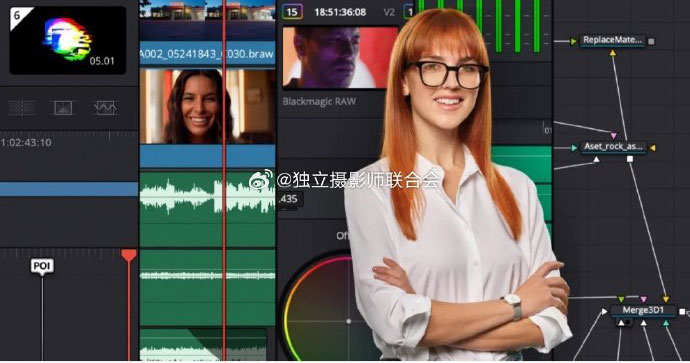
DaVinci Resolve 19 Public Beta 3 Released, look at the recent set of updates bought by Panasonic.
DaVinci Resolve 19 Public Beta 3 released. Updates:
- Improved speed performance of Super Noise Reduction (UltraNR) for individual clips.
- Enabled support for viewing HDR content in the user interface for Windows in the Music Remixer feature.
- Added the ability to instantly reset all layers or bypass certain layers in the node stack.
- Improved cursor refresh operation during editing.
- Improved Replay playback functionality.
- Improved audio quality in complex nested timelines.
- Increased the number of audio channels that the Source Viewer and Inspector can play.
- Display battery level of DaVinci Resolve Micro Color Panel in preferences.
Follow us on our social pages FACEBOOK | TWITTER | INSTAGRAM, If you have time –>see more Camera News
By admin, on May 24th, 2024
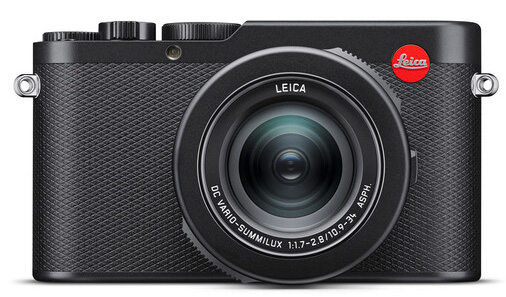
Like a D-Lux 8 finally announced, the camera features an updated menu system similar to the full-frame Q3 model and some subtle upgrades. Let’s talk about the set of camera upgrades from its predecessor. First of all, the sensor remains the same, so don’t get overexcited thinking you will get a new sensor. It has the same sensor and the same image processor. Also to be noted, the camera uses the same old DFD autofocusing system (Depth From Defocus) developed by Panasonic, so we will not be getting any hybrid SIMO autofocus sensor inside this camera. Overall, the core specifications remain similar, but Leica was able to do something related to the display portion of the camera. In the D-Lux 8, the viewfinder is upgraded to OLED 2.36 million dots, earlier the DLUX 7 had a 2.76M dot “equivalent” viewfinder, but according to LEICA the new one avoids the field-sequential tearing effect for smoother operation.
Other Updates
- Rear Screen: It boasts a higher resolution 1.84M dot (960 x 640px) rear screen, enhancing clarity and detail in image review and menu navigation.
- USB-C Charging: The new model includes a USB-C socket, allowing for convenient in-camera charging.
- Bundled Flash: The D-Lux 8 comes bundled with a flash, adding value and flexibility for low-light shooting.
Leica DLUX 8 Major Specification
- 17MP Four Thirds CMOS Sensor
- Leica 10.9-34mm f/1.7-2.8 Lens
- 24-75mm Full-Frame Equivalent
- DNG Format Support
- On-Camera Flash Included
- Leica FOTOS App Connectivity
Leica DLUX 8 Press Release
Leica DLUX8 Press Release:
Leica announces the continuation of compact digital cameras with the upcoming launch of the Leica D-Lux 8 on 2nd July 2024
Teaneck, NJ, May 23rd 2024. Leica Camera AG will launch the new Leica D-Lux 8 on July 2nd 2024. In 2003, the German premium manufacturer introduced the first D-Lux. Eight generations and numerous special editions later, the D-Lux has solidified its position in the top-quality segment of Leica’s digital compact cameras.
The new D-Lux 8 brings the quintessential Leica experience into a more compact and accessible form. The overall user experience and iconic design are a testament to the excellence of the legendary Leica brand, recognized globally as a leader in the field. For enhanced user comfort, the controls have been simplified and ergonomically repositioned, while the user interface, inspired by the popular Leica Q-Cameras, has become even more user friendly. The D-Lux 8 features a 4/3” CMOS sensor offering 21MP (effective 17 MP), the fast Leica DC Vario-Summilux 10.9–34 mm f/1.7–2.8 ASPH. lens (35mm equivalent to 24-75 mm), intuitive design and seamless connectivity with the Leica FOTOS app. The flash included with the camera further expands the versatility of the D-Lux 8.
In addition to the camera, a new range of accessories will be introduced. These include a hand grip, carrying straps, wrist straps, and leather protectors available in multiple colors. Additional accessories such as an automatic lens cap, soft release buttons, and a selection of bags, including a hip bag, crossbody bag, and equipment bag, expand the camera’s portfolio.
The Leica D-Lux 8 will be available globally on July 2, 2024 at all Leica Stores, the Leica Online Store, and through authorized dealers. The US retail price will be $1,595.
By admin, on May 23rd, 2024
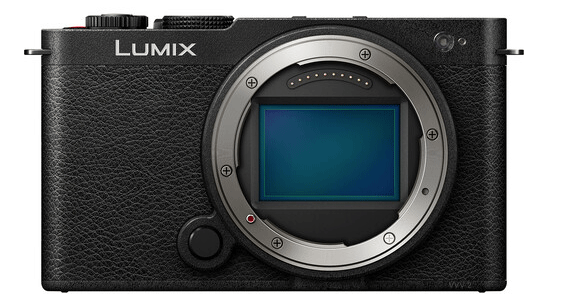
Panasonic S9 was finally announced, the camera features excellent core specifications with some limitations, we take a look at the detailed core
Get Panasonic S9 from B&H Store | amazon.com
Nikon S9 Major Specification
- 24MP BSI CMOS sensor with on-sensor phase detection
- 4K 3:2 open-gate video in 25 or 30p (4:2:0 10-bit) with new ‘MP4 (Lite)’ codec
- 6K 3:2 open-gate video at up to 30p (4:2:0 10-bit)
- 6K or DCI/UHD 4K from full sensor width up to 30p
- DCI/UHD 4K up to 60p (with APS-C crop)
- Dedicated LUT button to apply LUTs in real time (photos and video)
- Tight integration with the new LumixLab smartphone app
- Dual conversion gain sensor with explicit ‘Dual Native ISO’ gain selection
- UHS-II card slot
- 1.84M dot fully-articulating LCD
Panasonic Launches New LUMIX S9 Compact Full-Frame Mirrorless Camera, Ushering In A New Era for Seamless Content Creation
The smallest and lightest LUMIX S Series camera yet shoots and shares to social media in 30 seconds*2 with the new LUMIX Lab app
Newark, N.J. (May 22, 2024) – Panasonic is proud to announce the LUMIX S9, the smallest and lightest full-frame mirrorless camera in the LUMIX S Series. Available in four colorways–Jet Black, Crimson Red, Dark Olive, and Classical Blue–the LUMIX S9 is a stylish companion for content creators on the go and easily elevates social media content. With the introduction of the LUMIX S9 to its line-up of cameras, Panasonic aims to bring a new enjoyable shooting experience for creators, making the journey from capturing moments to sharing them with the world seamless and intuitive.
The approximately 24.2-megapixel full-frame CMOS sensor is equivalent to that of the LUMIX S5II, and the latest engine captures content in rich detail with natural tones. The full-frame sensors also deliver stunning results, even in low light conditions, and offer cinematic quality, with a beautiful bokeh effect. The camera is additionally equipped with PDAF (Phase Detection Auto-Focus), providing excellent subject tracking, as well as Active I.S., which significantly reduces blurring from camera shake even when shooting handheld, allowing users to shoot content confidently, in any situation and environment
Designed with the creative smartphone user in mind, the LUMIX S9 also grants users a range of popular, classic or bespoke color styles in-camera with the popular REAL TIME LUT function via a new dedicated button on the camera body. Furthermore, with the new LUMIX Lab app creators can develop their own unique LUT color files on their smartphone. Through these features, one can effortlessly generate original and shareable stills and videos without the need of post-production editing on a computer, expanding the scope of creative possibilities. The speed of transferring data from camera to smartphone has also been improved with the new app and the ability to pair it with a LUMIX camera.
The LUMIX S9 also introduces a new recording format: MP4 Lite. Shooting Open Gate in 4:2:0 10 bit in 30p/25p, creators can capture high quality videos in the optimum format for smartphone, and easily resize aspect ratios to suit social media with the LUMIX Lab app. With this new streamlined editing workflow, content creators can easily shoot and share while on the go.
Key LUMIX S9 Features include:
- The first compact design in the LUMIX S Series, combining a small and lightweight body with high image quality.
- Compact and lightweight body weighing approximately 403g/0.89 lb.*3
- Approx. 24.2-megapixel full-frame CMOS sensor and the latest engine deliver powerful imaging performance.
- Improved real-time recognition AF with PDAF (Phase Detection Auto-Focus) for more precise subject tracking performance.
Industry leading image stabilization technology with 5-axis Dual I.S.2: 6.5 stops*4 / Body I.S.: 5 stops*5 and Active I.S. compensate for camera shake when shooting while walking.
- Equipped with MP4 Lite, a new smartphone-optimized Open Gate video mode.
- Free-angle rear screen for flexible shooting at all angles.
- New LUMIX Lab app for effortless connection.
- Allows high-speed transfer of photos and videos from the camera to a smartphone.
- Enables users to easily create original LUT files and transfer them from a smartphone to the camera, allowing them to enjoy their own preferred color expressions.
- Quick and easy editing of MP4 Lite video files optimized for social media sharing.
- REAL TIME LUT for a wider range of creative expression
- Fully customizable LUT color files can be loaded in-camera for creative shooting
- Dedicated LUT button on the camera body for ease of use.
Panasonic will unveil the new LUMIX S9 at 2024 VidCon Anaheim from June 26-29. It will be available for purchase in late June 2024 at valued channel partners for $1,499.99.
|
KEEP THIS BLOG ALIVE - Support New Camera Buy Canon Lenses, Buy Music CD or Digital Camera at amazon it helps this site, and you do not pay anything extra, it is just a way to help support this site.

|



 Look at the updated information we have related to the upcoming Canon R5 Mark II camera.
Look at the updated information we have related to the upcoming Canon R5 Mark II camera.











